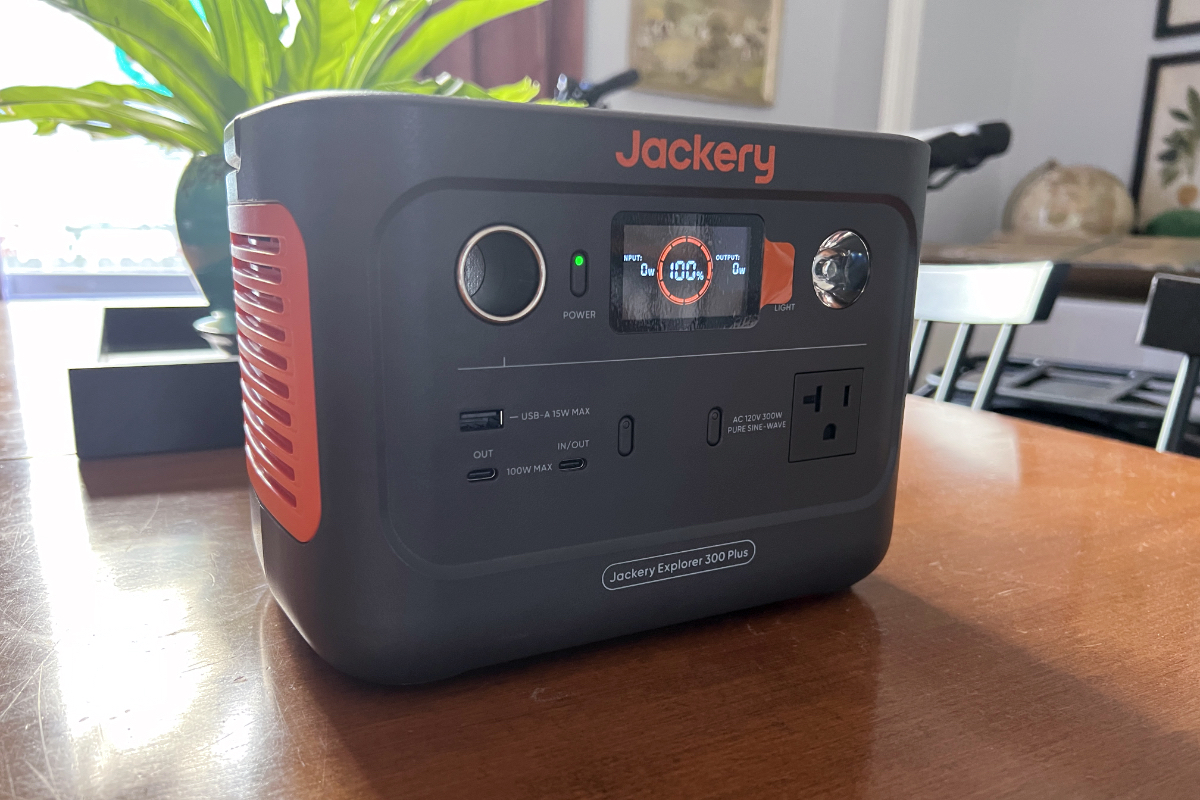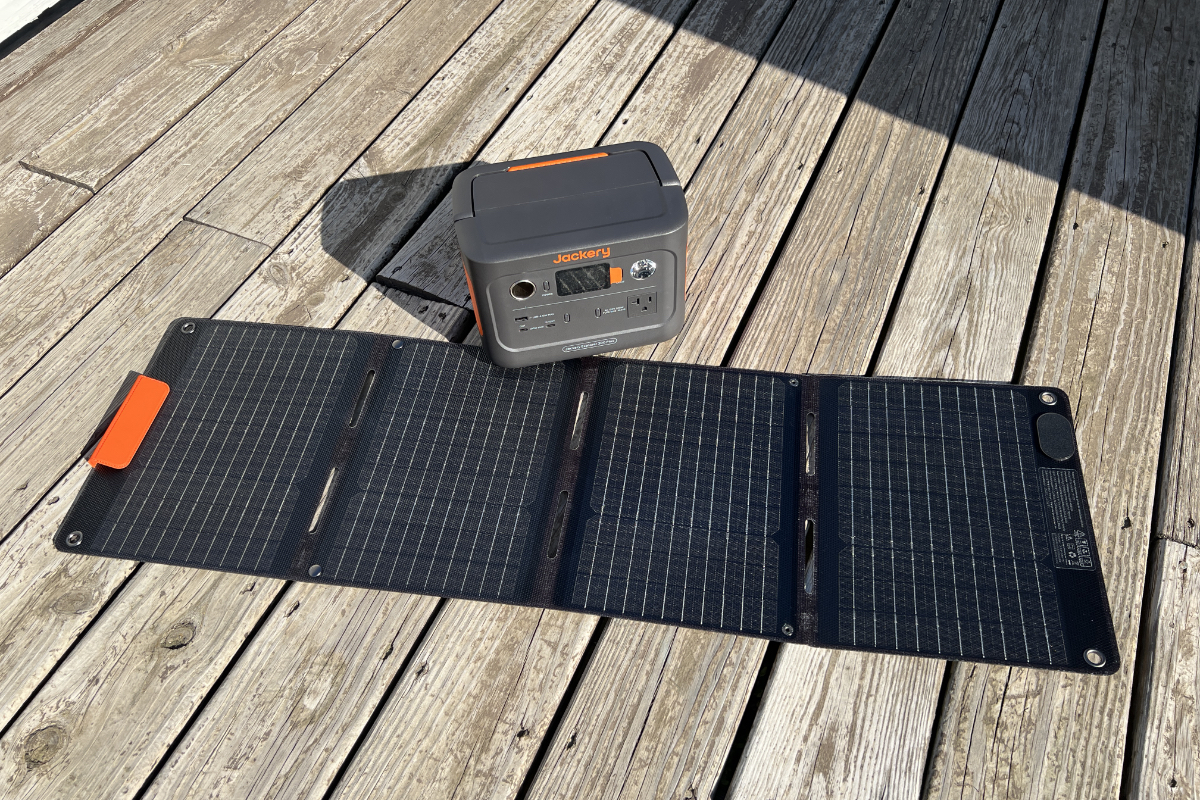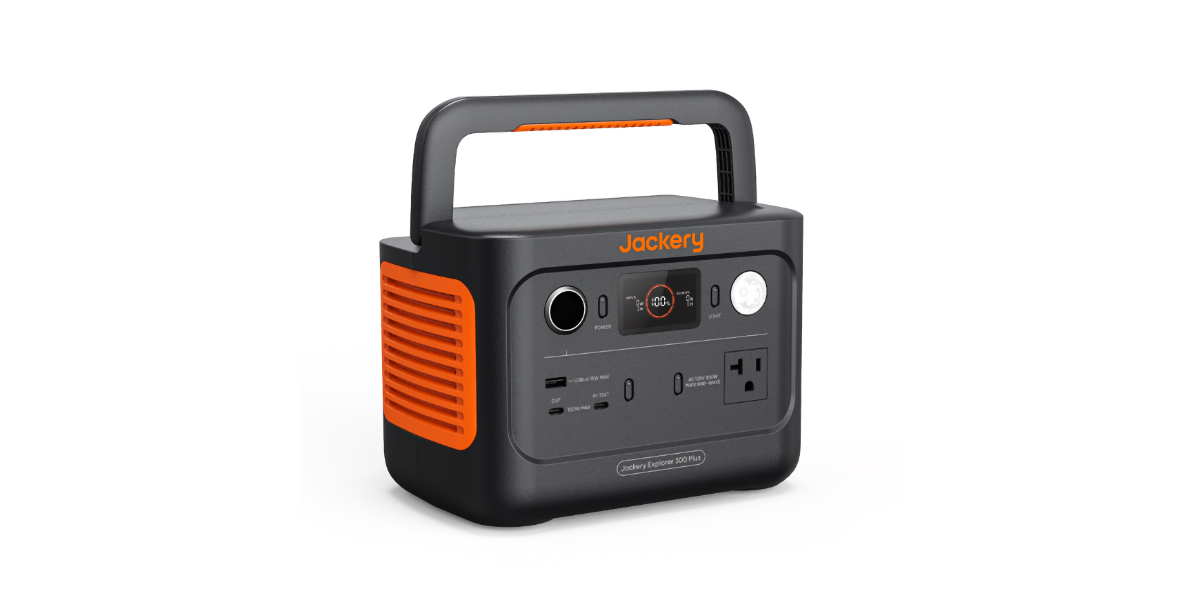Jackery Explorer 300 Plus Review: Putting the ‘Portable’ Back Into Portable Power Stations
It has been an incredible year for Jackery. Over the past several months, the company has released a slew of innovative new power stations equipped with battery packs large enough to power our RVs and even our homes. Those models have taken storage capacities and electrical output to all-new levels, creating an expandable clean-energy ecosystem that is highly versatile and easy to use. But those larger power cells also add weight to these devices, making them challenging to move around.
Fortunately, Jackery hasn’t forgotten its roots, which began by offering compact, relatively lightweight models that could go just about anywhere. To that end, the company’s latest solar generator—the Explorer 300 Plus—is its lightest unit yet, tipping the scales at a mere 8.27 pounds. At that weight, it emphatically puts the “portable” back in portable power stations without making many sacrifices along the way.

Photo Credit: Kraig Becker
The Tale of the Tape
Despite its diminutive stature, the Explorer 300 Plus is a surprisingly capable and well-equipped power station. The device has a LiFePO4 battery with a 288Wh capacity and a sustained output of 300W with a peak surge of up to 600W. Admittedly, those numbers are paltry compared to other models on the market but are quite impressive considering the unit’s size and weight. Unlike its larger siblings—such as the Jackery Explorer 2000 Plus or 3000 Pro—this is a device that you can comfortably stuff into a backpack and take with you into the backcountry.
Due to its size, the Explorer 300 Plus doesn’t have as many charging ports as most larger models. The power station comes with a single 120V AC outlet, a 12V DC vehicle port, and one standard USB-A (15W) port. It does include two 100W USB-C PD (power deliver) ports, however, which can charge compatible devices very quickly. One of those ports is also bi-directional, allowing power to flow both in and out of the unit, something we’ll touch on further below.
Those specs allow the Explorer 300 Plus to strike the perfect balance between capability and portability. This isn’t a device you’ll use to power a portable air conditioner or run an electric coffee maker. But it will recharge your smartphone more than a dozen times, power a wireless Bluetooth speaker for up to 18 hours, and provide three full charges to a laptop. In other words, it is a fantastic option to take with you while tent or car camping, heading out for a gathering with friends, or spending the day at the beach. It can also serve as an emergency power source at home, keeping your essential gadgets running during a blackout.

Photo Credit: Kraig Becker
Solar Panel Included
When it comes to recharging, the Explorer 300 Plus may be Jackery’s most versatile power station yet. The unit can replenish its batteries using a 120V AC wall outlet in as little as two hours or in about 5.5 hours using a 12V DC vehicle port. It can also be charged via solar panels or using the aforementioned bi-directional USB-C port. Charging times for the former depends on the size of the panels, but the latter will refill the power cells in about three hours.
Having four options for recharging the Explorer 300 Plus is handy, making it easier to keep it charged at home or in the field. And since one of the USB-C ports offers both power in and out, users get added functionality without adding extra weight or bulk. USB-C charging can be slow, which is why it is seldom found on larger models. But it works very well here, where the batteries are not massive in size and recharge relatively quickly.
One of the best things about this new power station is that Jackery included a 40-watt solar panel in the box. Usually, those accessories are sold separately, but shipping one with the Explorer 300 Plus is an unexpected bonus that delivers a lot of value. When purchasing this unit, owners get everything they need to keep their solar generator functioning even when wandering completely off the grid.
The small panel is efficient, but it isn’t exactly speedy. It takes 9+ hours to fully recharge the unit’s batteries, so you’ll have to leave it connected to the power station for most of the day. But the solar panel’s size and weight make it highly portable, and when not in use, it folds down to a surprisingly small footprint that easily stashes into a backpack.

Photo Credit: Jackery
Small in Size, Not Features
One of the best things about the Explorer 300 Plus is that despite its size, it isn’t exactly lacking in features. Like Jackery’s other power stations, it can be controlled and monitored remotely using a smartphone app, which is common in larger units but is somewhat unusual in models of this size. The device is also whisper quiet, which means it won’t disrupt the serenity of the campsite.
As mentioned above, Jackery used LiFePO4 batteries in the Explorer 300 Plus, which are safer than standard lithium power cells and much lighter than lead-acid. They also have a longer lifespan, offering up to a decade of use even with regular charging and discharging of energy. That means, unlike power stations from the past, this model should continue to function at a high capacity for many years to come.
Other nice touches include a bright, easy-to-understand LCD screen that shows power in and out, along with the current charge level. The power station also has a built-in LED light with a single brightness setting and a flashing emergency SOS mode. That is a standard feature on most models these days, but it is super handy to have at a dark campsite.

Photo Credit: Kraig Becker
Great Value
The Jackery Explorer 300 Plus fills a much-needed niche in the portable power station market. While so many other models have grown in size and capacity, there are plenty of outdoor enthusiasts who just need a device that is lightweight, easy to carry, and provides plenty of power. This unit does just that, and at an exceptionally great price.
MSRP for this power station is just $299.99. Considering that it comes with a 40-watt solar panel in the box, that price is even more impressive. Better still, the included charging cables are extremely high quality, indicating that this product wasn’t just an afterthought on the part of Jackery. Instead, it reaffirms the company’s commitment to delivering the best power stations on the market, regardless of size or price point. With the Explorer 300 Plus, the company has achieved that goal and then some.
To learn more about the Explorer 300 Plus, visit the Jackery website.
The post Jackery Explorer 300 Plus Review: Putting the ‘Portable’ Back Into Portable Power Stations appeared first on RV.com.






